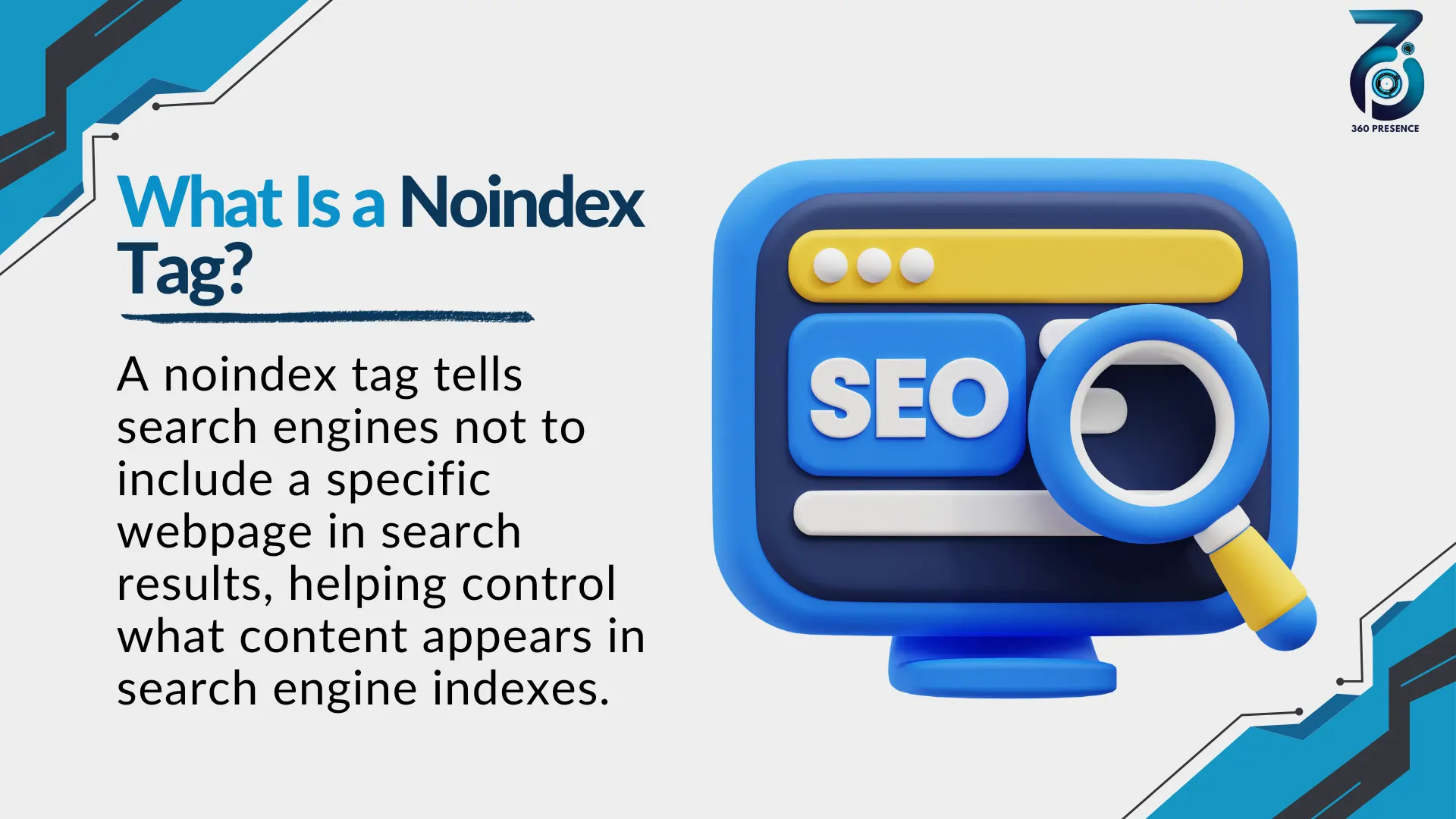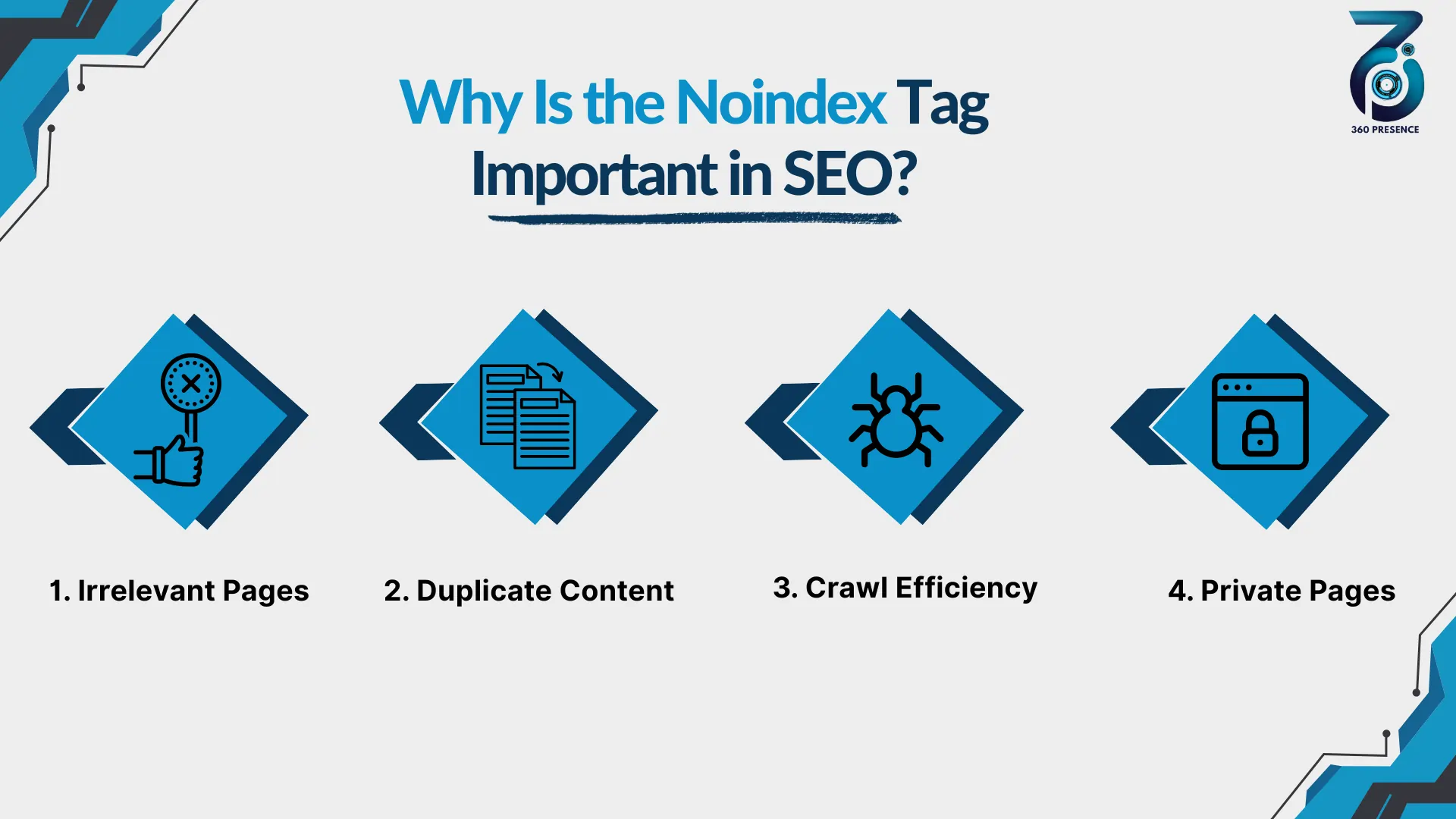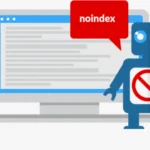What Is a Noindex Tag? A Simple Guide for Better SEO Control

What Is a Noindex Tag?
A noindex tag is a simple instruction added to a webpage that tells search engines not to include that page in their search results. When Google or other search engines see this tag, they understand that this page should be excluded from their index, meaning it won’t show up in search queries.
Think of it like putting a “Do Not Enter” sign on a page for search engines. It’s especially helpful when you want to keep certain pages hidden from the public search but still want them available on your site.
You May Also Like to Read: What is Indexing?
How Does the Noindex Tag Work?
There are two main ways to add a noindex directive to your website:
1. Meta Noindex Tag (for HTML pages)
This is the most common method for web pages. The noindex tag is placed in the <head> section of the page’s HTML code. It looks like this:
<meta name=”robots” content=”noindex, follow”>
- Noindex tells search engines not to index the page.
- Follow tells them to follow the links on the page (important for passing link equity).
2. X-Robots-Tag (for non-HTML files)
For files like PDFs, images, videos, or other resources that don’t have HTML code, the noindex directive can be set in the HTTP header using the X-Robots-Tag:
X-Robots-Tag: noindex, follow
This header tells search engines not to index the file but to follow any links it might have.
You May Also Like to Read: How Search Engine Algorithms Work?
Why Is the Noindex Tag Important in SEO?
The noindex tag plays a crucial role in managing your website’s presence on search engines and improving your SEO strategy. Here’s why:
1. Keeps Irrelevant Pages Out of Search Results
Pages like thank you pages after a form submission, login pages, or internal search results don’t provide value to users searching online. Indexing these pages can confuse search engines and dilute the quality of your site’s indexed pages.
2. Helps Avoid Duplicate Content Issues
Duplicate content can harm your rankings because search engines don’t know which page to prioritize. Using the noindex tag on duplicate or near-duplicate pages helps search engines focus on the original, valuable content.
3. Improves Crawl Efficiency
Search engines have a limited crawl budget, which means they only crawl a certain number of pages on your site at a time. By noindexing low-value pages, you free up crawl budget to focus on your important pages.
4. Protects Sensitive or Private Pages
Sometimes you want to keep certain pages out of search results for privacy or security reasons, like member-only areas, admin pages, or staging sites. The noindex tag helps keep these pages hidden.

You May Also Like to Read: Search Engine Algorithms
How to Set Up a Noindex Tag (Step-by-Step)
For HTML Pages (Meta Tag)
1. Open the HTML file for the page you want to noindex.
2. Add this code inside the <head> section:
<meta name=”robots” content=”noindex, follow”>
3. Save and upload the file.
If you use a CMS like WordPress with SEO plugins such as Yoast SEO or AIOSEO, it’s even easier:
- Edit the page or post.
- Find the SEO settings or the advanced tab.
- Look for “Allow search engines to show this post in search results?”
- Select “No” to add the noindex tag automatically.
- Save or update the page.
For Non-HTML Files (X-Robots-Tag)
1. Open your server’s configuration file or .htaccess file.
2. Add this directive for the files or directories you want to noindex:
Header set X-Robots-Tag “noindex, follow”
3. Save and deploy your changes.
Since this involves server settings, it’s best to work with a developer if you’re unfamiliar with server configurations.
Best Practices for Using Noindex Tags
To get the most from noindex tags and avoid common SEO pitfalls, keep these best practices in mind:
1. Don’t Block Noindex Pages with robots.txt
Ensure pages with a noindex tag are crawlable by search engines so they can read the tag. If blocked by robots.txt, the noindex tag won’t be seen.
2. Avoid Long-Term Noindex on Important Pages
Google has said that pages with noindex tags over a long period eventually stop passing link equity, even if “follow” is used. If you want to maintain link value, consider using redirects or canonical tags instead.
3. Use Canonical Tags for Duplicate Content
Noindex is not the best solution for duplicate content. Use canonical tags to signal the preferred version of a page and consolidate ranking signals.
4. Test Your Noindex Tags
Use tools like Google Search Console’s URL Inspection Tool to verify if Google has detected your noindex tag. Request re-crawling if changes don’t reflect promptly.
5. Audit Regularly
Mistakes happen — sometimes important pages get accidentally noindexed. Regularly audit your site using SEO tools like Ahrefs, Screaming Frog, or your CMS’s SEO plugin to ensure noindex tags are applied correctly.
You May Also Like to Read: How to Optimize Your Website for Search Engine Crawlers
When Should You Use a Noindex Tag?
Here are common situations where using a noindex tag makes sense:
- Thank you for confirmation pages (post-purchase or form submissions).
- A/B testing or temporary campaign pages.
- Paginated content or archive pages that add little SEO value.
- Duplicate or thin content pages.
- Private or sensitive pages (like login or admin areas).
- Staging, testing, or development sites are not meant for public search
Conclusion
The noindex tag is a simple but powerful SEO tool that gives you control over which pages search engines index and display. By strategically using noindex tags, you can improve your site’s search performance, protect sensitive pages, avoid duplicate content issues, and ensure search engines focus on your most valuable content.
Remember, always keep your noindex pages crawlable, avoid blocking them with robots.txt, and regularly audit your site to avoid mistakes. With proper use, the noindex tag helps you create a cleaner, more focused search presence, boosting your SEO and enhancing user experience.
Partner with Nauman Oman
Recent Posts
Working Together Ideas come to life
No matter how big your company is, as you expand and reach new highs you’ll want an agency to have your back. One with a process
360presence@gmail.com

© 2023 360PRESENCE All rights Reserved
















